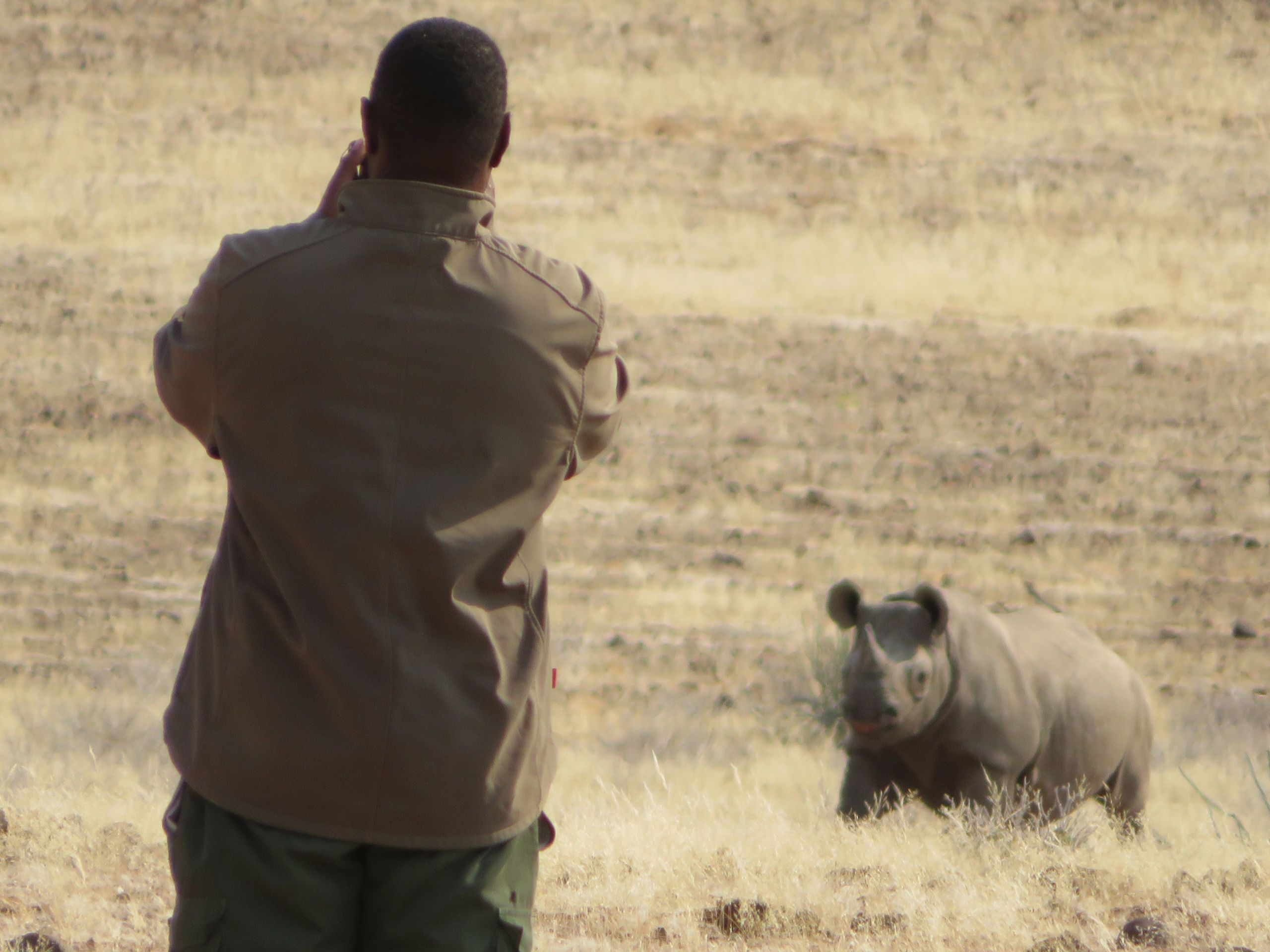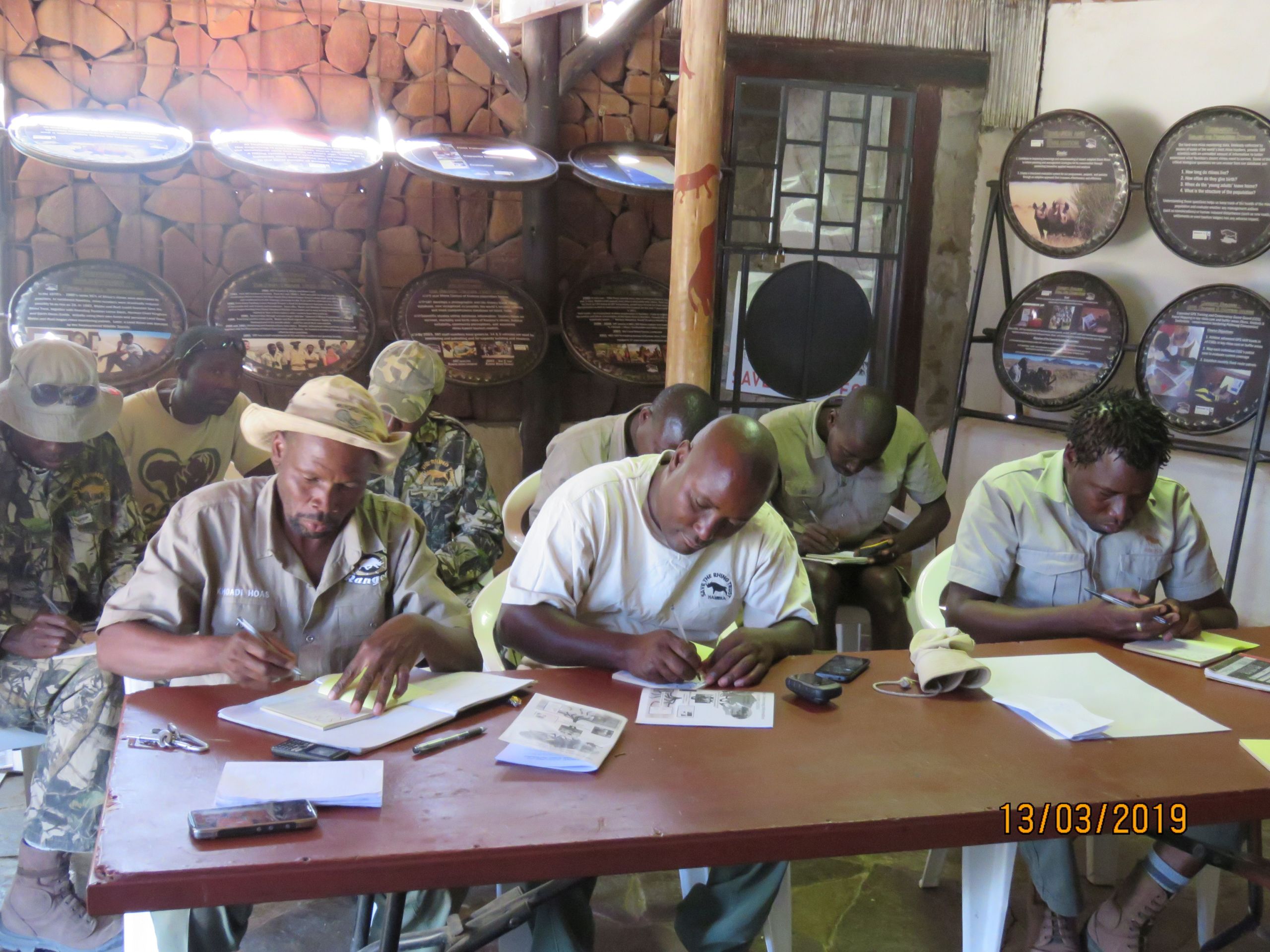For better user experience, please use another browser.
Chutes de Karera Nature Monument, 9168; Failles de Nyakazu Nature Monument, 9167.
Integrated Management Effectiveness Tool (IMET)
Le projet va améliorer la qualité des infrastructures d’accueil des visiteurs. Il va améliorer également la qualité d’accueil et de guidage des visiteurs à travers la formation des guides touristiques communautaires. Le projet impliquera les communautés locales dans la gestion des activités écotouristiques. Les femmes formées à l’art culinaire contribueront nettement à l’amélioration de l’image des chutes et de failles par la qualité de leur service à proposer des mets variés et bien préparés aux visiteurs. C’est une grande innovation car ce service n’a jamais été rendu sur les deux sites. De même, le projet renforcera les capacités des jeunes à pouvoir valoriser la tradition du terroir en proposant aux visiteurs des objets d’arts fabriqués sur place. Toutes ces initiatives en faveur des communautés locales leur permettront de profiter directement des retombées financières générées par l’affluence des visiteurs.
Télécharger l’infofiche du projet.
Association Protection des Ressources Naturelles pour le Bien-Etre de la Population au Burundi (APRN/BEPB); ASBL : Conservation et Communauté de Changement (3 C)





Mangabe-Ranomena-Sahasarotra National Park, 555697885.
This project addresses two the BIOPAMA Action Component objectives:
This project will address two priority needs of the protected area:
Updating the management plan
To write up and validate the management plan, Madagasikara Voakajy will organize three workshops. The first one will involve MV and MEDD team members and will focus on writing up the management plan based on the existing data and the new template provided by the Ministry of Environment and Sustainable Development of Madagascar. The second workshop will present and validate the management plan at the regional level. The third workshop will present and validate the management plan at the national level. The final version of the management plan will be shared with all stakeholders in the relevant format and language.
Improving the infrastructure, equipment and facilities
Madagasikara Voakajy will acquire two new motorbikes during the first quarter of the project. This will allow the team to intervene more rapidly in the field. The grantee will build and equip an information centre in three villages: Andranomandry, Avolo and Mangabe, and run monthly awareness campaigns at these centres. It is expected that community members attend the campaigns and visit the centre regularly. Tent shelters will be established in Mangabe to welcome tourists.
As a direct result of this project, Madagasikara Voakajy expects to:
On the long term, this project will contribute to reducing deforestation in Mangabe Protected Area, increasing community members’ knowledge and skills to manage the protected area, and improve their livelihoods through efficient agricultural techniques.
Download the project infofiche.
Madagasikara Voakajy




Mondrain Reserve
There are two main activities for this project:
1. The development of a management plan, which will provide a clear vision for the future of the reserve and a how to prioritise activities, in a time-bound and costed manner. The plan will be developed through a stakeholder site visit to the Mondrain reserve to establish the broad management objectives, an updated METT analysis (which will feed into the development of the management plan) and two stakeholder workshops to further gather views of field staff, horticulturists, managers, from MWF and its partners in government, private sector, academia etc. Views will be collated and draft circulated for discussion and finalisation during the workshops, in a stepwise process.
2. The purchase of a dedicated 4×4 vehicle, will improve access to the reserve and improve the management of the reserve for managers, scientists, community members and other stakeholders, help in conducting small group visits by students and tourists (which may be expanded in the future), improve monitoring and evaluation, increase research and provide transportation for labourers working in the reserve.
The development of management plan will increase the effectiveness of the management of the reserve as we are using an inclusive and participatory approach (with inputs from academia, local communities, local experts and other organization working on reserve management/plant conservation, government department working on biodiversity conservation etc.) By having ideas and contributions from different stakeholders, it brings together new insights, new findings and new information and it allows us to develop a plan that is based on sound science, good practices but is also pragmatic and easier to implement. This will ultimately benefit the reserve and help safeguard the unique habitat and threatened species found there. The management plan will be the blue print that will help prioritize actions and guide future work in the reserve. The vehicle is an important asset that will allow us, over the years to come, to continue implement actions towards the protection of the reserve by providing access to the reserve to key staff, students, researchers and visitors.
Download the project infofiche.
Mauritian Wildlife Foundation




Mumbwa GMA, 4094; Namwala GMA, 4093; Mafunta GMA, 555626090; Chiawa GMA, 62095; Rufunsa GMA, 303859; Luano GMA, 4095.
Game management areas (GMAs) are protected areas in communally owned lands that make up more than 70% of the total protected area in Zambia. Overall governance of GMAs has been in decline, reflected in an increased rate of habitat loss, land disputes and declining wildlife populations. This has serious consequences for conservation in Zambia. The project will address tackle key governance challenges at GMAs including issues related to benefit sharing, accountability, rights recognition, participation in decision-making, gender equality, transparency and information sharing, and law enforcement.
The project will improve governance of the six target protected areas and is designed to have a wider impact on governance of protected areas within Zambia as well as across the eastern and southern Africa region that are using a CBNRM approach. Improved governance will lead to more effective and equitable management of the protected area and associated benefit flows to local communities which in turn will enhance local livelihoods and well-being and improve the health of the ecosystem and its wildlife populations. In some respects, the project may deliver more for well-being than typical alternative livelihood interventions since governance interventions contribute to non-material aspects of human well-being, e.g., dignity, voice, security, social capital, and generally cost less than alternative livelihood interventions.
Download the project infofiche.
International Institute for Environment and Development; Zambia Community-Based Natural Resource Management Forum





Réserve Naturelle Communautaire de Palmarin, 555629214; Aire Marine Protégée de Gandoule, Parc National du Delta du Saloum, 866; Aire Marine Protégée de Saint-Louis, 352704; Parc National des Oiseaux du Djoudj, 867; Parc National de la Langue de Barbarie, 869.
Integrated Management Effectiveness Tool (IMET)
Le projet inclue les activités suivantes:
Télécharger l’infofiche du projet.
Directions des parcs nationaux (DPN); Direction des Aires Marines Communautaires Protégées (DAMCP)





Ziwa wildlife sanctuary.
Covid-19 has hit Rhino Fund Uganda (RFU) hard, resulting in income loss of 93% overnight, representing urgent and serious threats to ranger and community livelihoods, which are exacerbated by other socio-economic impacts. Should RFU fail, there is no other NGO, or other organisation, in Uganda with the relevant expertise or manpower to take on the sanctuary.
Activities include reinstatement of a Biodiversity Management Program (BMP) that was suspended due to Covid19, to improve the habitat for white rhinos by bush clearing and invasive species management allowing supressed grasses to flourish. The success of the program to date shows that it will enable other wildlife and bird species to utilise the improved habitat thereby increasing biodiversity.
The Biodiversity Improvement Program will employ and equip local manual labour, trained Rhino Fund Uganda rangers and a Uganda graduate Biodiversity Officer, all who, in turn, will add to the economic prospects of the local community due to their improved purchasing power.
A Revolving Goat Scheme (RGS) will bring new, income earning opportunities to women in the local community, who will have the opportunity to raise goats for food or sale. In either case, this will help alleviate malnutrition and enhance the community economy.
This project will improve community livelihoods via employment and micro-enterprise, bicycle and goat donations, firewood and cattle-grazing access, and combatting malnutrition, excessive charcoal production and over-grazing in community lands. It will improve biodiversity and habitat within the Sanctuary, optimizing the carrying capacity for white rhinos, enabling calving rates to be maintained. It will ensure social dynamics that reduces inter-species fighting and thereby injury or death of the endangered rhinos. Management effectiveness in anti-poaching and tourism will be maximised.
Download the project infofiche.
Rhino Fund Uganda

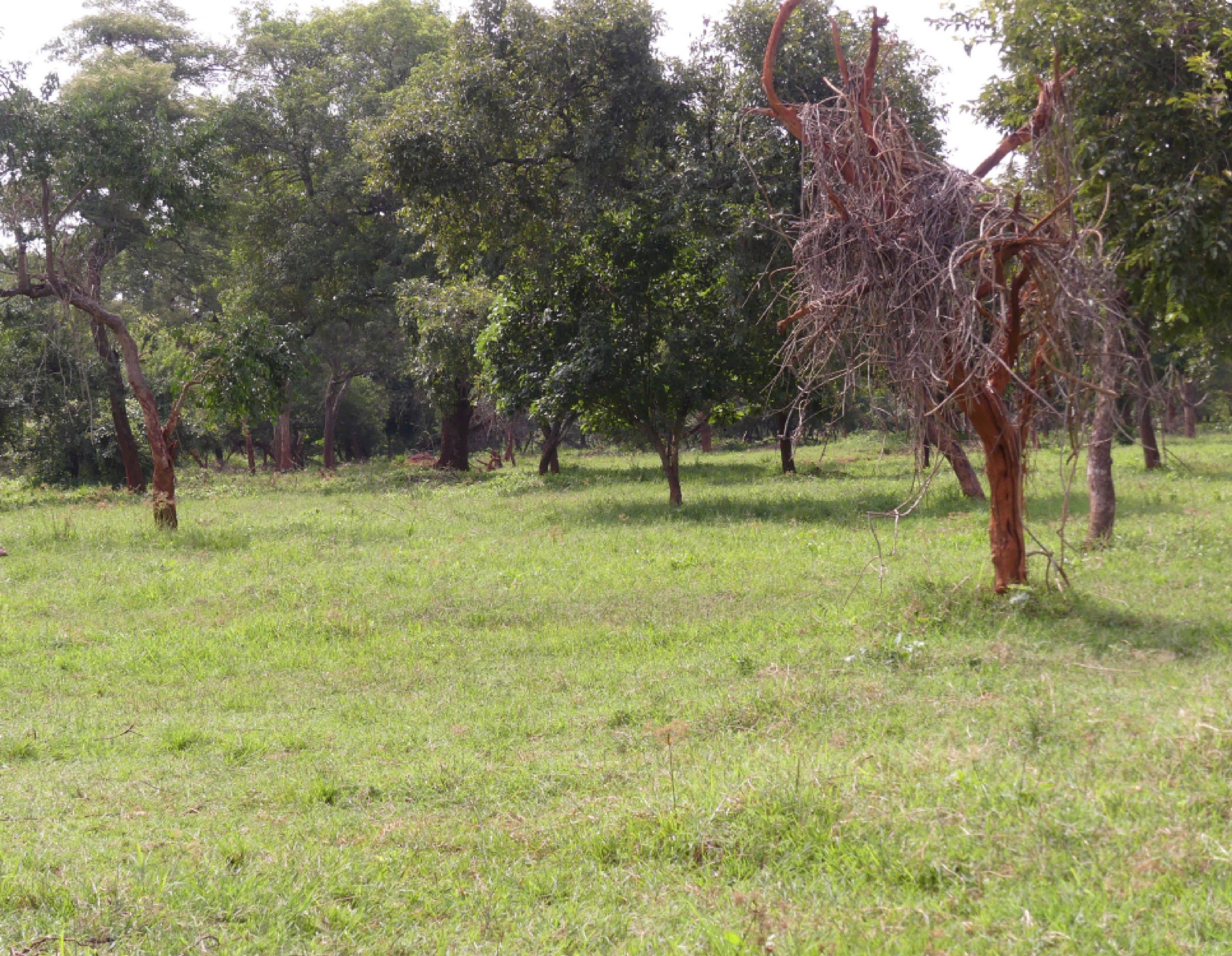
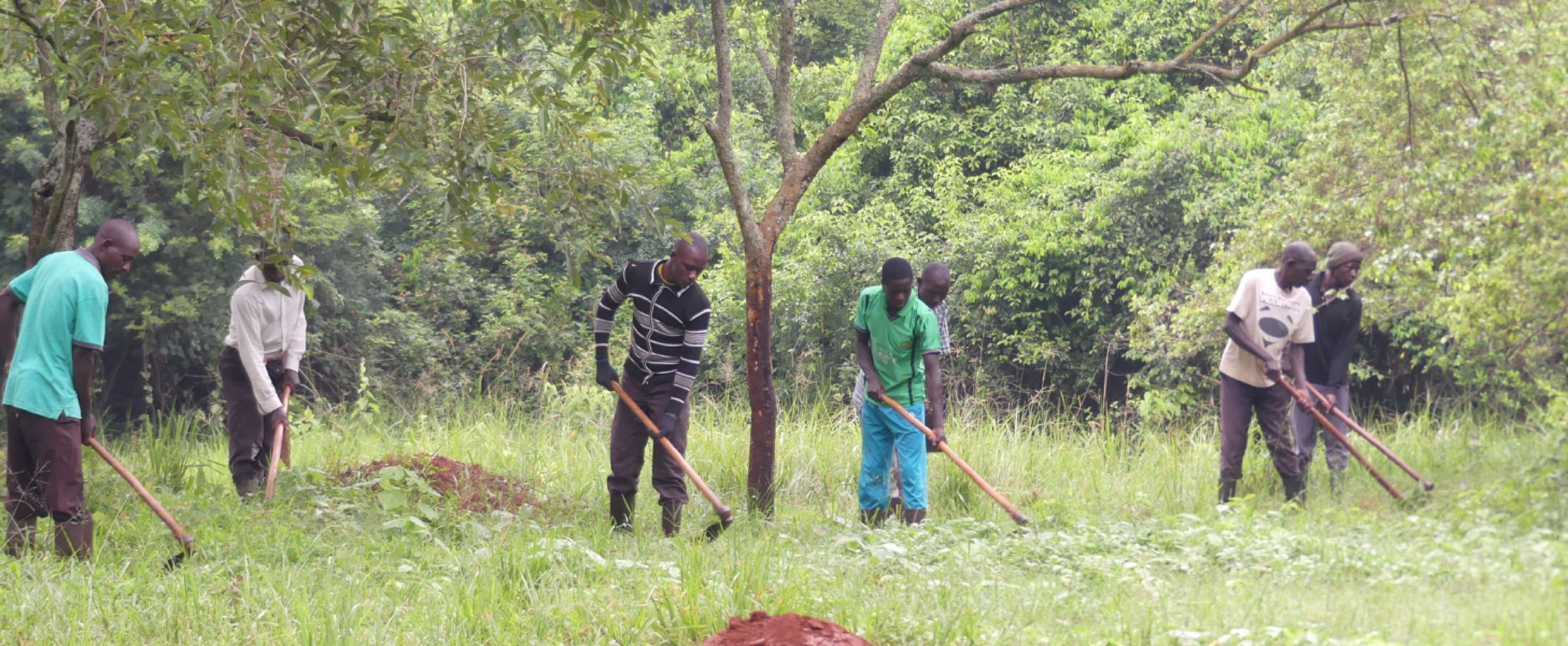
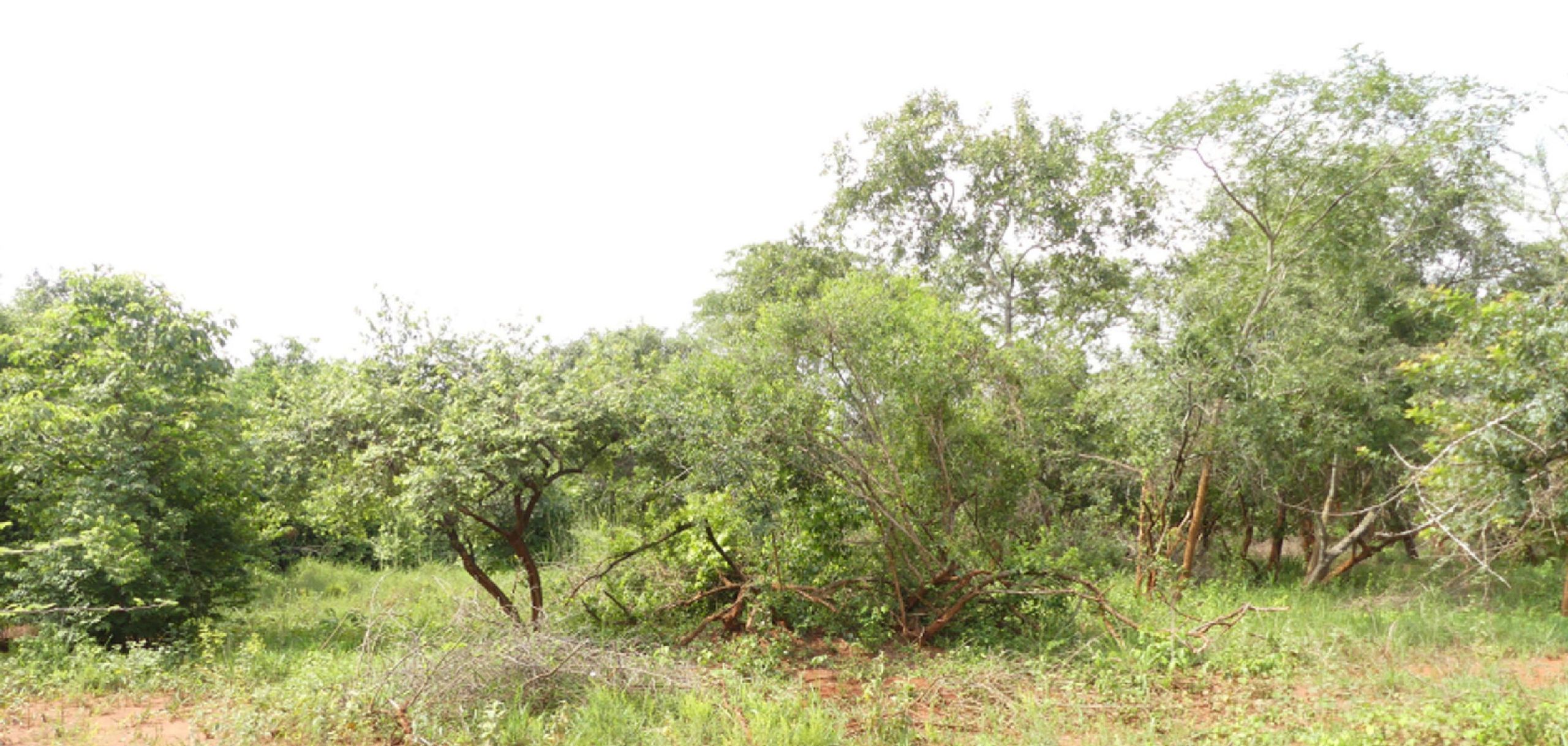
Kambui Hills and Extensions Forest Reserve 303925; Kambui South Forest Reserve 29972
National Biodiversity Strategy and Action Plan https://www.cbd.int/doc/world/sl/sl-nbsap-v2-en.pdf
The priority need of the project is to deliver a well-managed forest reserve, clearly demarcated and highly visible and known and appreciated by local communities, The reserve should help conserve ecosystems and maintain a rich biodiversity. It should provide ecosystem services for both humans and biodiversity and help to combat climate change. The Kambui Hills Forest Reserve forest should be co-managed by the government and the communities.
Several years of neglect in terms of management has resulted in increased illegal and damaging human activities within the reserve. Large areas have been encroached upon and degraded through activities like chain saw logging, charcoal harvesting, mining, slash and burn farming and settlement development and hunting. The unclear boundary creates ambiguity as to where the reserve ends and where the salvage lands begin.
To reveres this situation a robust awareness campaign about the reserve, its purpose and its usefulness will be undertaken with the aim of getting the communities to subscribe to and support its conservation. The campaign will also popularize the laws governing the reserve. The ill-defined and ambiguous boundaries which rationalise encroachment will be made clearly visible through brushing of the border, beacon erection, sign posting and establishment of a buffer zone. The degraded areas will be rehabilitated.
Damage is done to the reserve as forest edge communities utilize forest resources to finance a living. The project will create opportunities for alternative livelihoods. Alternative livelihoods will divert human activities away from the reserve into the salvage lands and so reduce pressure on the former.
A management plan and local bye laws will be created in consultation with the communities and the project will obtain an agreement between all focal communities, and the National Protected Area Authority /Forestry Department, and the Conservation Society of Sierra Leone to adhere to Forest protection laws. To ensure that all parties keep to the agreements a task force who will oversee and monitor events within the forest be instituted. A reserve governance structure will also be established.
The project will also contribute to the alleviation of poverty which is so high in the region, by establishing a loan scheme and promoting tourism.
The project will deliver a reserve with visible and well demarcated boundary known to all stake holders, and with a buffer zone around the perimeter. Stakeholders will be aware of governmental laws and regulations governing the reserve; and the reserve will be benefitting from people’s improved attitude towards it. An agreement between forest edge communities on one hand and NPAA/FD, Kenema DC and CSSL on the other, to adhere to Forest protection laws will be in place. There will be increased support of the stakeholders for the protection of the reserve. The establishment of alternative livelihoods will redirect the activities of the communities to areas outside the forest and positively influence their economic capacity. A well trained task force will overlook the benefit sharing scheme which would have been established. Most of the degraded areas within the reserve would be rehabilitated.
A popularised Governance structure will exist. The FMCs and FD staff will have greater capacity to undertake forest management as a result of training
Community members have appropriate opportunities to participate in management planning, processes and actions in collaboration with the NPAA and the department of forestry. Thus the project will leave behind a well-managed functional reserve, with highly protected rich biodiversity, and maintained ecosystem, with the species richness and diversity maintained or improved. It will provide an opportunity for threatened species to thrive again. Negative human activities will be minimal.
Download the project infofiche.
The conservation society – Sierra Leone

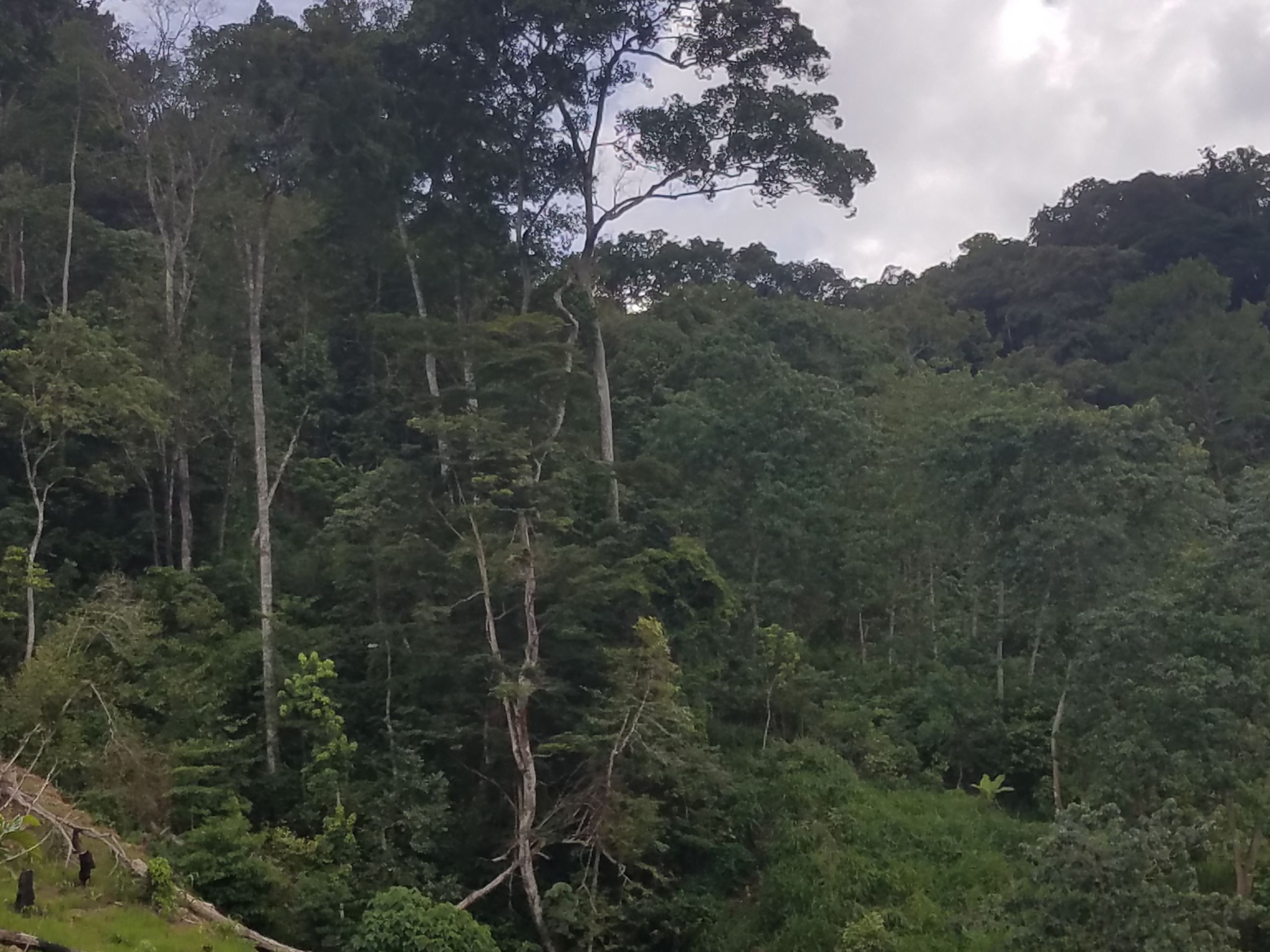
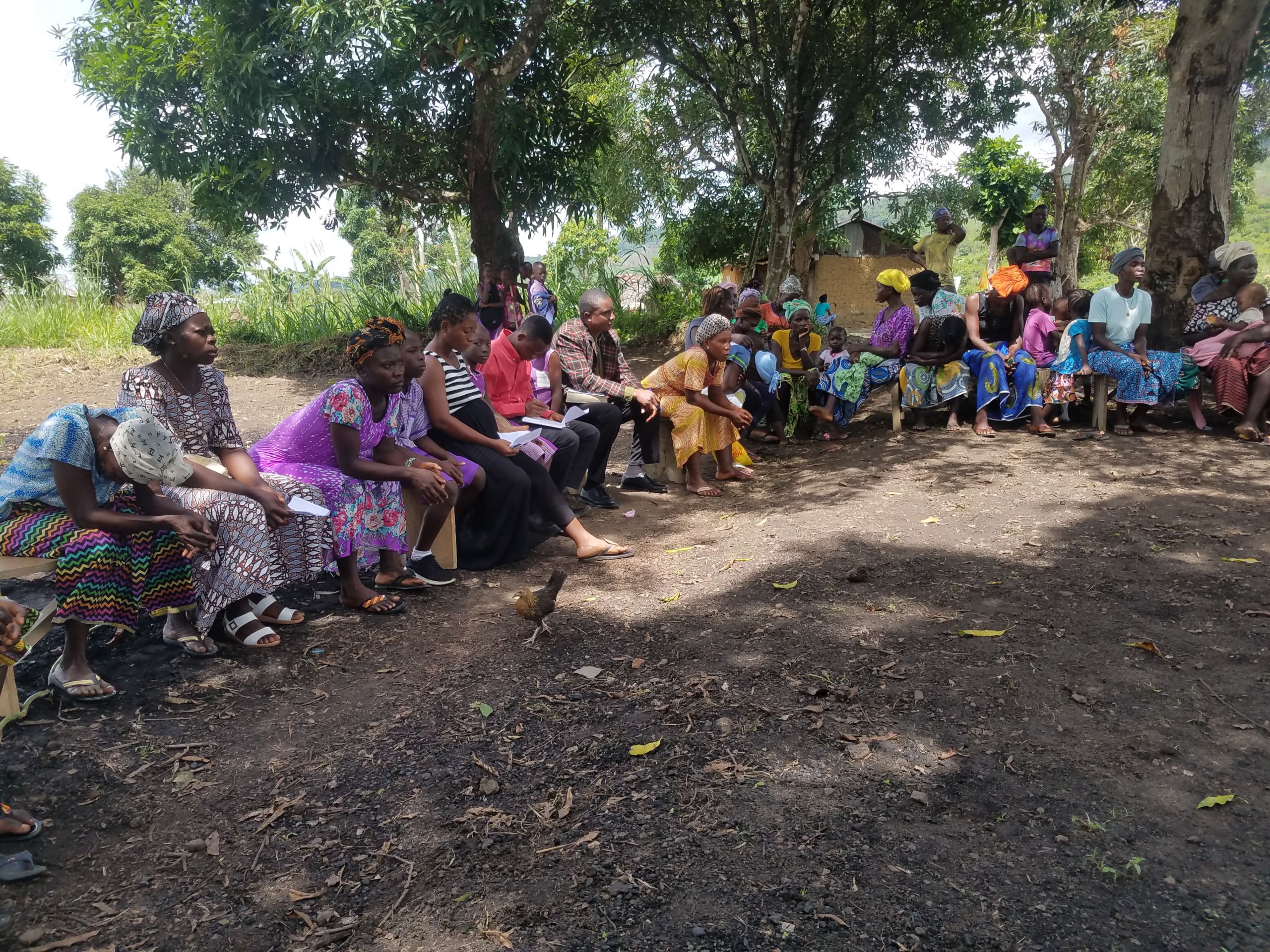

Curral Velho, Ramsar Site of International Importance, 109005; Reserva Natural Ponta do Sol; Reserva Natural Boa Esperanca; Reserva Natural da Tartaruga; Parque Natural do Norte.
Action Plan for Sea Turtles in West Africa 2017 – 2022 (initiated by MAVA Foundation)
The overall aim of the project is to reduce poaching of endangered sea turtles on Boa Vista. This will be done though the implementation of two new techniques aimed at better protecting sea turtles: Conservation Dogs and Night-Vision Drone. Both projects are designed to provide technical, logistical, and strategical support to the “Sea Turtle Surveillance Task Force” (STSTF) initiative, initiated by the Cape Verdean Ministry for Agriculture and Environment. The priority will be to improve patrol operations teams by the acquisition of field equipment and devices and training.
The first project activity is focused on the purchase of two vehicles, one for the drone team and the second for the dog team as these are particularly suitable for their specific needs. The vehicles will allow both teams to become more independent and to reach their full potential.
Given that the female sea turtles come to the beaches to lay their eggs at night, all direct protection measures have to occur at night. Even under bright moonlight conditions, it is impossible to detect poachers hidden between bushes and dunes with the naked eye or conventional binoculars. For this reason, two thermal imaging binoculars for night-vision will be purchased. These will help a part of the Sea Turtle Surveillance Task Force, who mainly support the drone team during night operations.
The second project activity aims at enhancing the Sea Turtle Surveillance Task Force capacities through trainings. A driving training safety will be offered to employees, in order to provide them with a safe driving feeling, and also to protect the vehicles so as to give them the longest possible life duration. The second training will be for the ground team rangers on the use of the night-vision devices – these are highly technical devices and it is important for the team to use them correctly and strategically.
Thanks to the new equipment and training, the Sea Turtle Surveillance Task Force (STSTF) will be able to increase effectivity of beach protection through improved, independent, and unrestricted mobility. Beaches can be monitored more frequently during the sea turtle nesting season while increasing the range of patrolling activity. The expected result is to cover 55 single beaches from 7 geographically distinguish beach-areas with a total of 15 km2.
The new equipment and the training will not only make the work of the teams safer and more efficient and will allow for strategic improvements in night-time beach surveillance, some of which would not even be possible without them. Taken together, both the temporal and spatial coverage of beach protection by the STDTF teams is significantly increased and the quality is improved.
Thanks to the support of BIOPAMA it is expected that poaching activity will continue to decrease on Boa Vista quickly, effectively, and sustainably. This would be a major contribution to the recovery of the endangered sea turtle population in Cape Verde.
Download the project infofiche.
Fundação Tartaruga Cabo Verde; Turtle foundation Germany


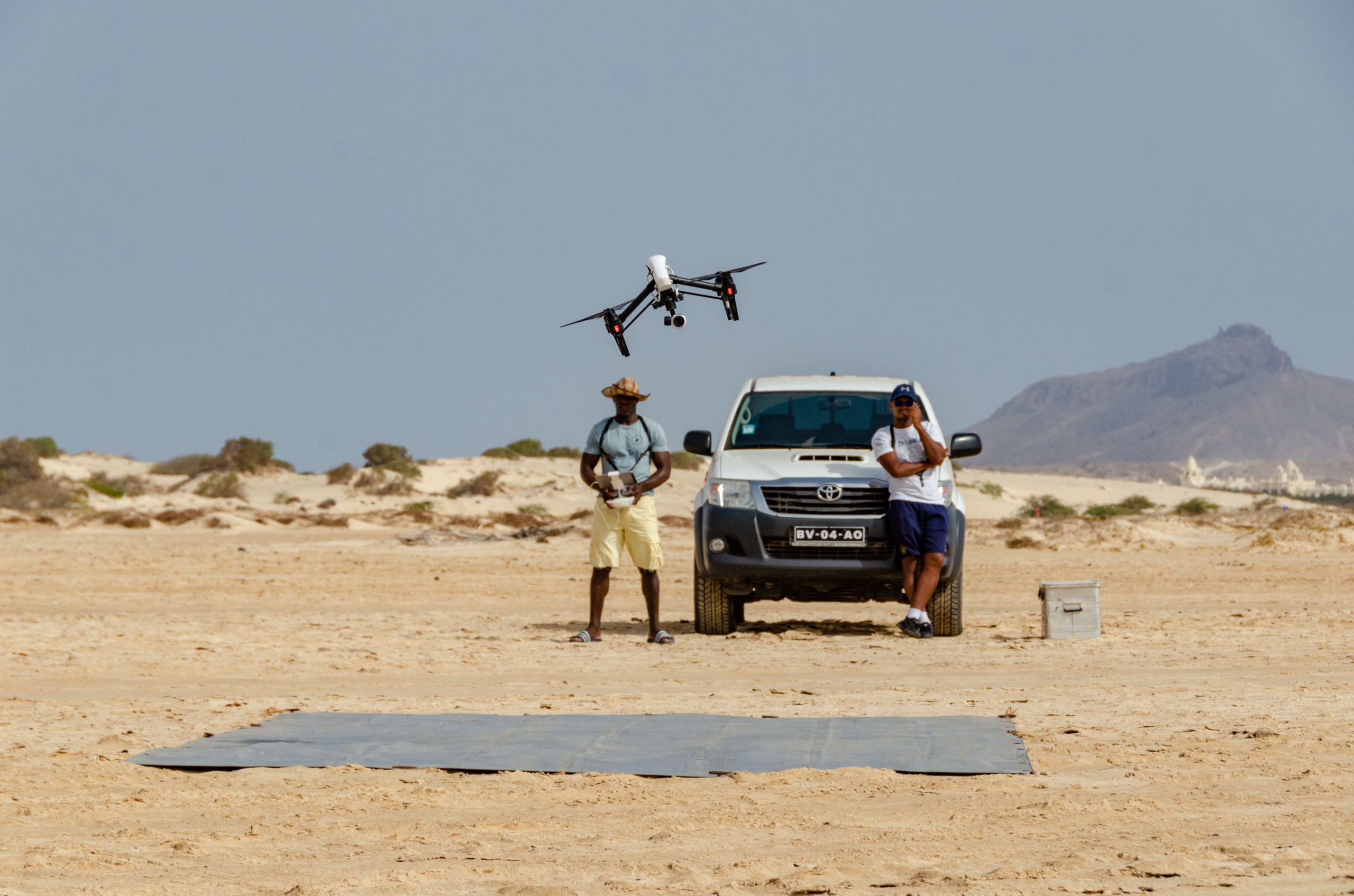
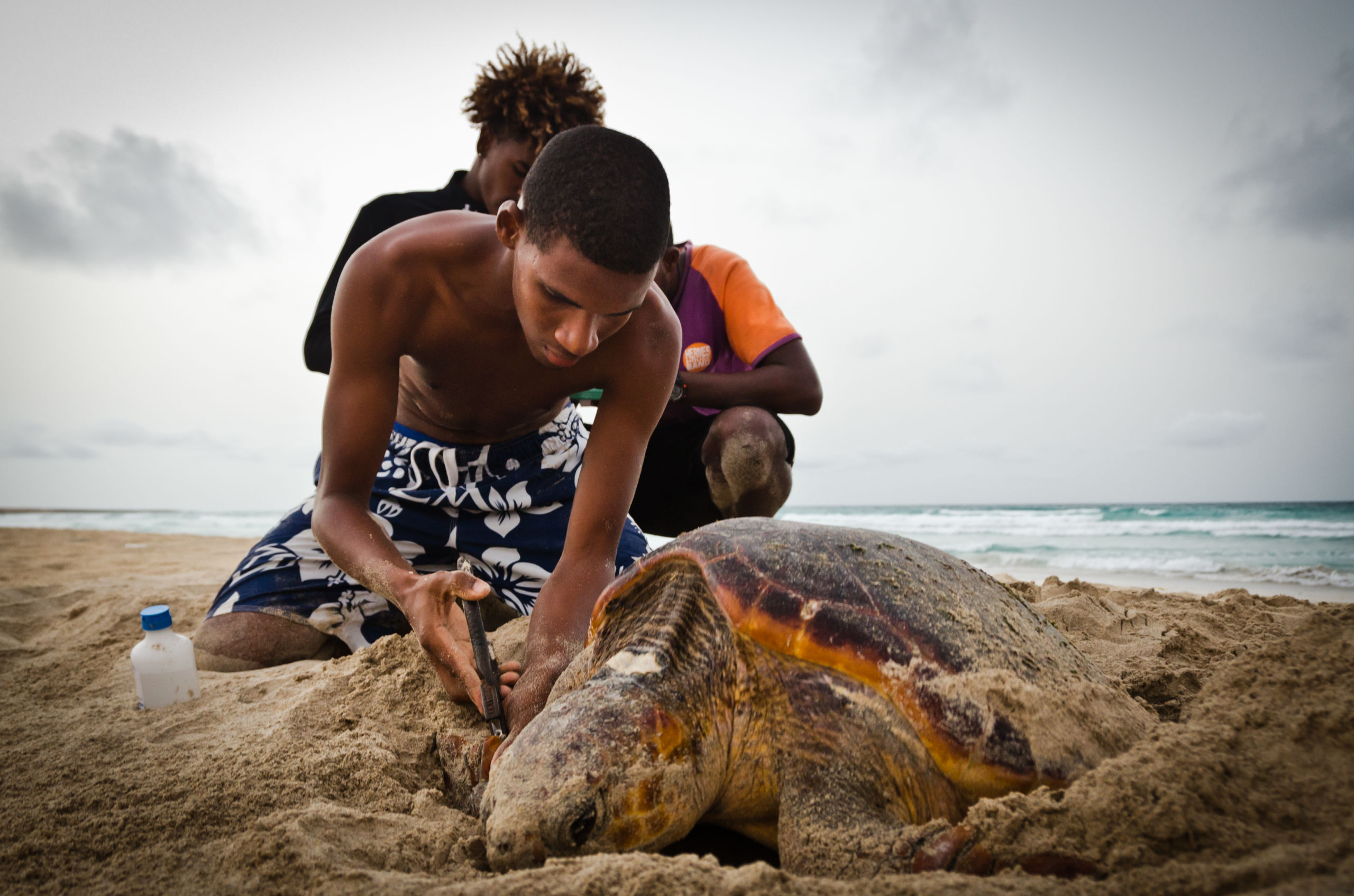

Lésio-Louna Reserve, 99862
RAPPAM evaluation; Parcs and reserves of Congo; Protected area management effectiveness evaluation
The project addresses two priority needs for the Lésio-Louna Reserve:
The operational capacity of field staff and eco-guards will be strengthened by:
The improvement in the performance and services of the ecotourism infrastructure will be achieved by:
The ability to conduct motorized patrols will enable eco-guards to regularly undertake missions covering a wider area of the reserve, and the development of field staff to using the SMART system will enable the project results to be verified and analysed on a larger scale whilst maintaining a high level of detail and accuracy. The capacity for data collection is also increased with the camera traps. These changes will significantly impact on the level of protection for the reserve and will result in an increase in the number of arrests and interruptions of illegal activities. The enhanced data collection will also increase knowledge of the range of species within the protected area.
The improvements to the eco-tourism infrastructure will enhance the visitor experience. The installation of the new solar energy system will reduce noise and pollution by an estimated 83% compared to the existing system and, together with the improved access via the Lefini river, it should lead to an increase in visitor numbers. There are 23 villages surrounding the Lésio-Louna Reserve, with over 17,000 residents, who could ultimately benefit as tourism revenue is used to support local communities and contribute to financing the protected area.
Download the project infofiche.
The Aspinall Foundation

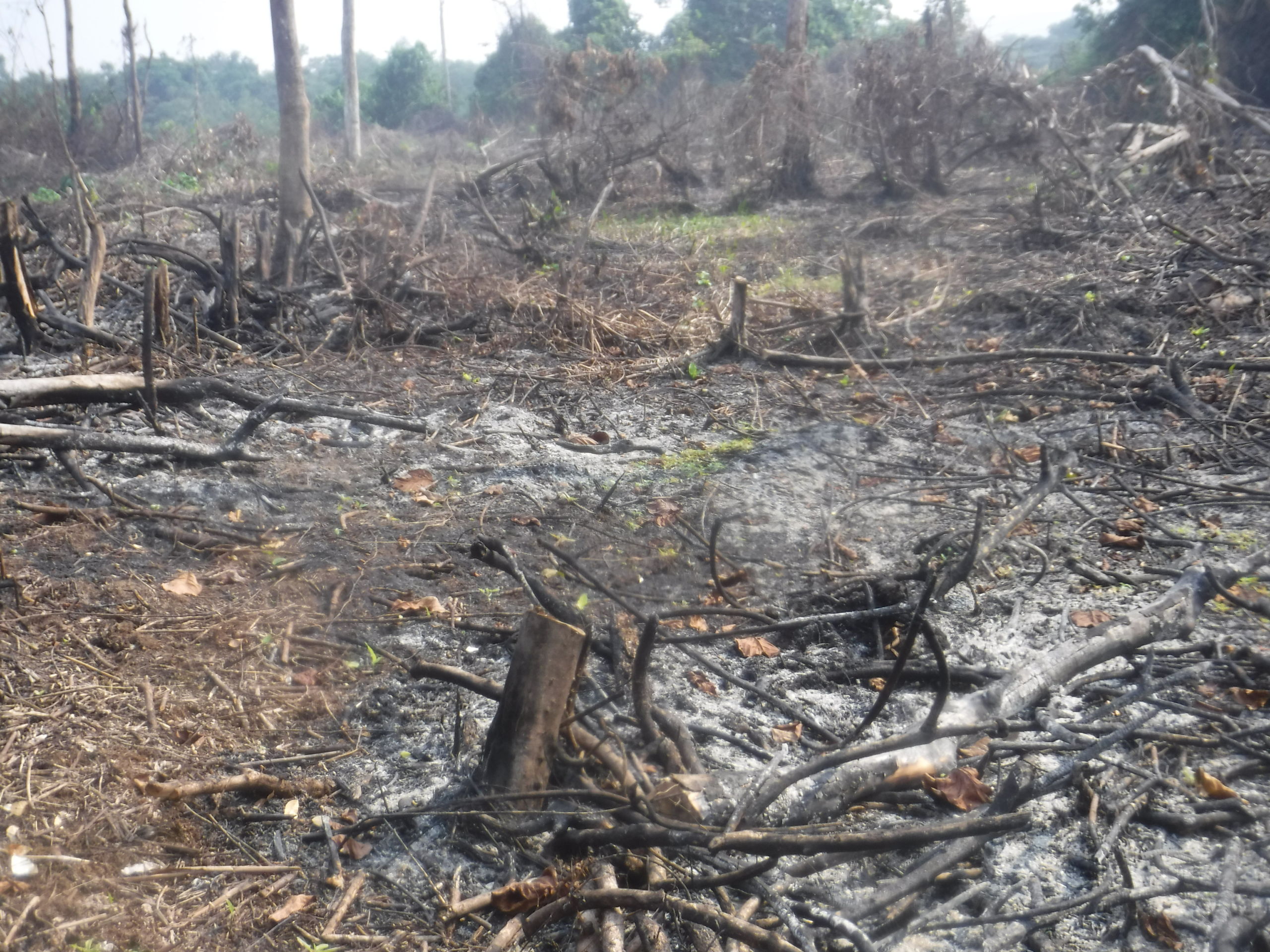


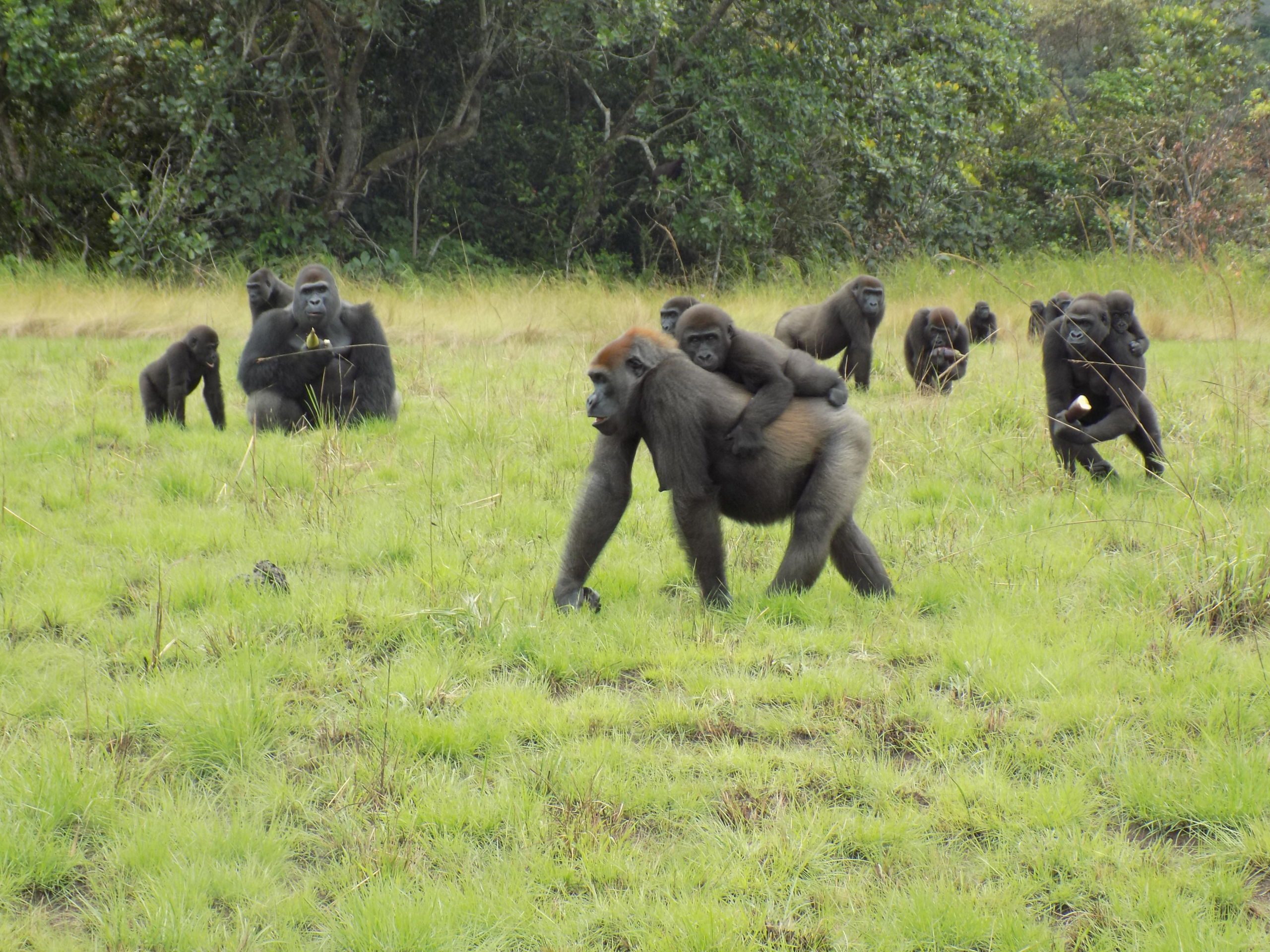
Etendeka Concession, 555542988
Palmwag Concession, 555542988
Uibasen Twyfelfontein Communal Conservancy, 555542921
Huab Communal Conservancy, 555542924
Sesfontein Communal Conservancy, 555542943
Sorris Sorris Communal Conservancy, 555542957
Torra Communal Conservancy, 555542951
Anabeb Communal Conservancy, 555542941
Doro nawas Communal Conservancy, 555542916
Khoadi-Hôas Communal Conservancy, 555542922
SMART patrol report
The project will enhance the management and governance of priority protected areas by addressing existing limitations through strengthening on-site infrastructure/equipment for patrolling, controlling poaching, developing capacity of staff. Furthermore, the project will support local communities’ initiatives aiming to enhance the livelihoods of local people while effectively contributing to protected areas management.
SRT has long recognized the importance of conservation as a rural and sustainable development tool. To this end SRT has included support to communal conservancies as a core pillar in the strategic plan, in line with the national CBNRM policy. Rhino tourism earned around US$250,000 for communal conservancies in 2017. Over the years we have developed a rhino trekking viewing protocol which is grounded on conservation principles of low disturbance and guest interaction with locally employed rhino trackers. SRT has helped to facilitate three contracts between communal conservancies and private sector partners and has worked to support these relationships to ensure that maximum income reaches conservancies. This income provides a sustainable income based on conservation principles and has helped to diversify the livelihoods of a large number of community members who are directly and indirectly engaged in conservation and tourism. At a local and more practical level, support from this project will ensure that rhino tourism and the rhino ranger program remain sustainable. The rhino ranger programme has been noted as one of the most innovative community based rhino conservation initiatives in Africa (link). SRT believes that the approach of incentivising local participation in conservation has contributed significantly to the reduction of poaching in the landscape. In terms of climate change adaptation, we believe that income from rhino monitoring has provided a sustainable form of alternative livelihood income for the approximatively 50 community based rhino rangers currently working in the region. These rangers form part of the beneficiaries of the project.
Through the support of the BIOPAMA project, SRT will purchase SMART capable devices and train staff and rhino rangers to use them during field patrols. The devices are a key component to ensuring accurate rhino monitoring data which is captured in the longest running black rhino database around the globe. The project will further focus on training for SRT trackers and rhino rangers in advanced rhino monitoring and securing the scene of crime if they come across a deceased rhino to ensure forensic evidence is secured for the investigation team. Funds will also be utilized to purchase a much needed radio communication system and complete work on field camps used by the monitoring teams to safely overnight in the field during their 21 day patrol cycles.
The project will help develop a conservancy rhino conservation recognition scheme which promotes national and international recognition for conservancies directly contributing to the rhino ranger programme. A similar recognition scheme will be introduced for private sector tourism operators who are conducting rhino tracking. Through BIOPAMA’s support, SRT Namibia will continue hosting conservancy workshops on the rhino ranger programme to actively promote ways to improve the sustainability of the program. Other activities include assistance in drafting of a rhino tourism policy, and a rhino ranger programme strategic plan, focused on financial sustainability.
The implementation of the project will strengthen the monitoring efforts of black rhino in ten targeted protected areas which covers approximately 20, 000 square kilometres. Eight protected areas which consists of communal conservancies will become less reliant on donor funding for monitoring of black rhino and become more self-sustainable. Through policy development, the project will mitigate potential negative environmental and social impacts.
Download the project infofiche.

